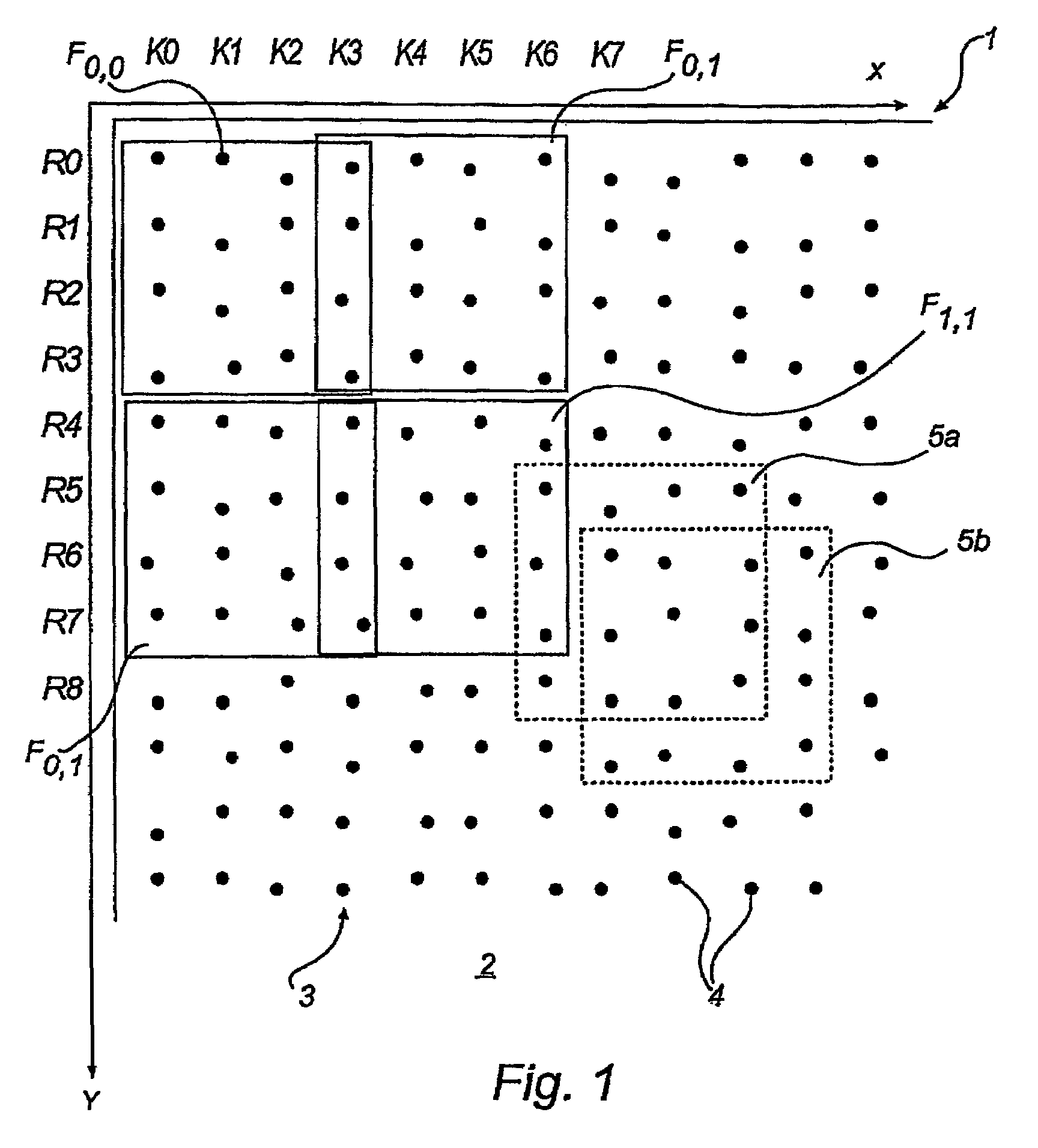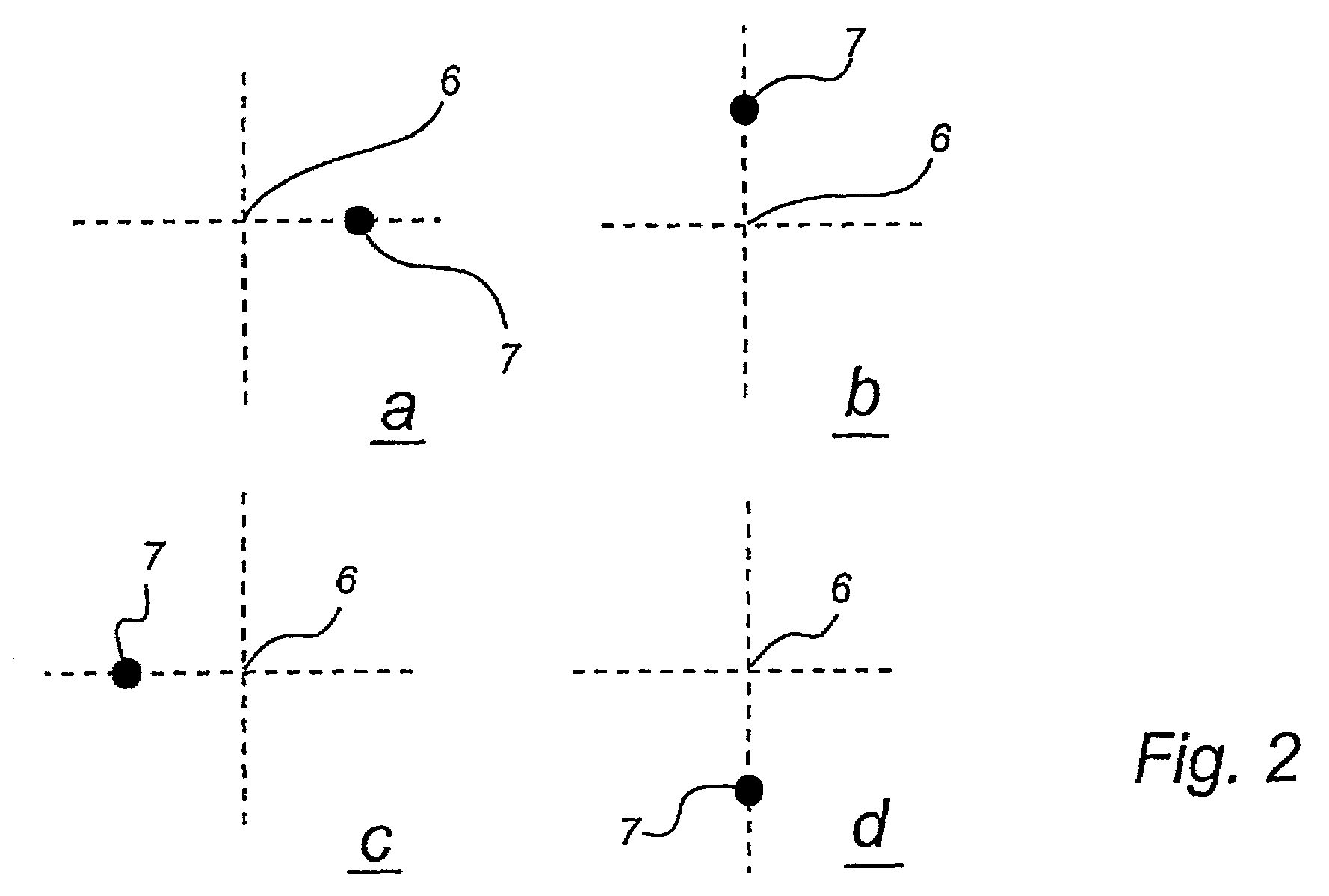Apparatus and methods relating to image coding
a technology of image coding and apparatus, applied in the field of pattern recognition and detection, can solve the problems of reducing the overall dynamic range of images, limiting the use of halftone information in cells, and reducing the spatial extent of halftone information, so as to achieve more flexibility and high density
- Summary
- Abstract
- Description
- Claims
- Application Information
AI Technical Summary
Benefits of technology
Problems solved by technology
Method used
Image
Examples
Embodiment Construction
[0036]For the sake of clarity, the detailed description of the invention below may be divided into a number of part-descriptions. As an introduction, a coding pattern will be presented with reference to FIGS. 1, 2a–d and 3. This coding pattern can be used for information storage as has been outlined above. As an example, the information stored in the pattern may include position information. After the presentation of the coding pattern, an apparatus intended for reading the pattern is then presented in connection with FIG. 4. After that is shown how an image can be produced by printing a screen pattern in the form of the coding pattern presented, comprising markings of varying extents, referring to FIGS. 5a and 5b. Finally, a method of modifying the appearance of the pattern markings that, on printing an image, overlap one another, is presented with reference to FIGS. 6a and 6b.
[0037]In the following discussion regarding the coding pattern a number of calculations take place. These...
PUM
 Login to View More
Login to View More Abstract
Description
Claims
Application Information
 Login to View More
Login to View More - R&D
- Intellectual Property
- Life Sciences
- Materials
- Tech Scout
- Unparalleled Data Quality
- Higher Quality Content
- 60% Fewer Hallucinations
Browse by: Latest US Patents, China's latest patents, Technical Efficacy Thesaurus, Application Domain, Technology Topic, Popular Technical Reports.
© 2025 PatSnap. All rights reserved.Legal|Privacy policy|Modern Slavery Act Transparency Statement|Sitemap|About US| Contact US: help@patsnap.com



